Have you ever wondered how raw fruits used to make jams, jellies, and marmalades are transformed into a thick, gel-like, delicious spread? It’s pectin! This unique ingredient imitates gelatin and allows jams, jellies, and marmalades to set.
What Is Pectin
The term pectin is derived from the Greek word pektos which translates to firm and hard, alluding to its ability to thicken liquids into a gel-like state. It is a naturally occurring starch and soluble fiber.
Most plants contain this specific heteropolysaccharide starch which is abundant in the cell walls of plants. In addition to this, pectin also helps plants to maintain their structure.
Though it is compared to gelatin, pectin is sourced from plants making it vegan. Pectin is found in the largest amounts in plums, apples, and citrus peels or pulp. Even though it is indigestible in its natural state, an altered form called modified citrus pectin is digestible.
Types Of Pectin
In short, there are two primary kinds of pectin: high methoxyl (HM) and low methoxyl (LM) pectin. High methoxyl pectin is the most common form of pectin and is marketed as fast or rapid-setting, or slow setting. It is ideal for making jams and marmalades.
In contrast, slow-setting HM pectin is best for jellies produced from strained fruit juice that is cooked with sugar to create a clear jelly as it cools.
On the other hand, low methoxyl pectin uses calcium to thicken up the food rather than reacting with sugar. Therefore, LM pectin is best suited to low sugar or sugar-free preserves. In addition to this, it is marketed as light or best used in low-sugar recipes.
Both types of pectin have many varieties that react differently to certain foods. For example, dry pectin has multiple forms, including classic, fast setting, slow setting, sugar-free, and low-sugar.
Additionally, there is also MCP pectin which resembles sugar-free or reduced sugar pectin, and instant, also known as freezer jam pectin. Pectin also comes in a liquid variety.
The only difference between liquid pectin and dry pectin is that it comes pre-dissolved, which decreases the chances that you will end up with clumpy jams or jellies. Since different forms of pectin react differently, it’s a good idea to purchase the specific kind of pectin listed in the recipe.
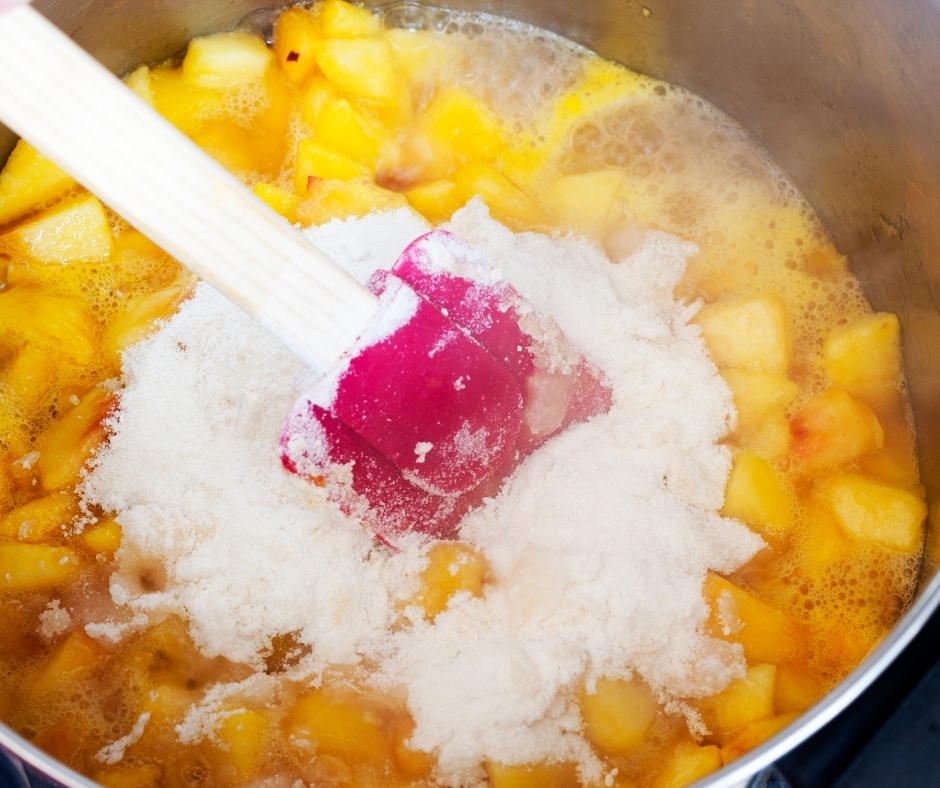
What Is Pectin Used For?
Regarding food, pectin can be used as an ingredient for meals that require thickening. It is also used as a fat substitute in baked goods or as an additive to extend the shelf life of baked goods.
However, it is most often used as a thickener for marmalades, jams, preserves, and jellies. When combined with sugar and acids like lemon juice, these foods morph into a semisolid gel-like consistency as they cool.
Pectin is also used to thicken recipes that feature use low pectin fruits. For example, some fruits such as strawberries or overripe fruits contain minuscule amounts of pectin. Strawberries can easily be mashed, which means there is not enough adhesive or pectin to keep the structure of the fruit together.
While you can add more sugar or cook strawberry jam or jelly for a longer time, these results are less favorable as you will end up with a product that tastes less like strawberries.
Alternatively, you can perform a simple test to determine if your fruit is rich in pectin before making a jam or jelly. Mix 1 tablespoon of ethanol or grain alcohol with a teaspoon of the fruit juice. If the mixture turns into a semisolid state, the fruit contains large quantities of pectin.
On the other hand, if the food turns into a loose yet coagulated state, it contains moderate amounts of pectin. If the fruit juice remains the same, it has relatively low amounts of pectin.
How To Use Pectin
The kind of pectin you are cooking with depends on how it is used in the recipe. For example, HM pectin must be mixed with sugar and acid then cooked to a temperature of 220°F to form a semisolid texture. In addition to this, HM pectin is added to the hot fruit base at the beginning stages of the cooking process.
On the other hand, LM pectin activates at room temperature, which means it is added near the end of the cooking process. LM pectin can also be combined with a bit of sugar before adding it to the fruit base.
Liquid pectin can be poured into the hot fruit base near the end of the cooking process.
Whether you use LM, HM, or liquid pectin, do not overcook it once it is added to the fruit base. If you overcook it or fail to stir it adequately, the pectin will break down rather than forming a thick gel.
What Does Pectin Taste Like?
Even though some pectin brands do impart a slightly bitter flavor to food, it is relatively flavorless. It is used in small amounts, especially in homemade recipes, so you would not know it is present in a jam or jelly unless someone told you. However if you are using homemade pectin it will resemble the flavor of the fruit it was made from.
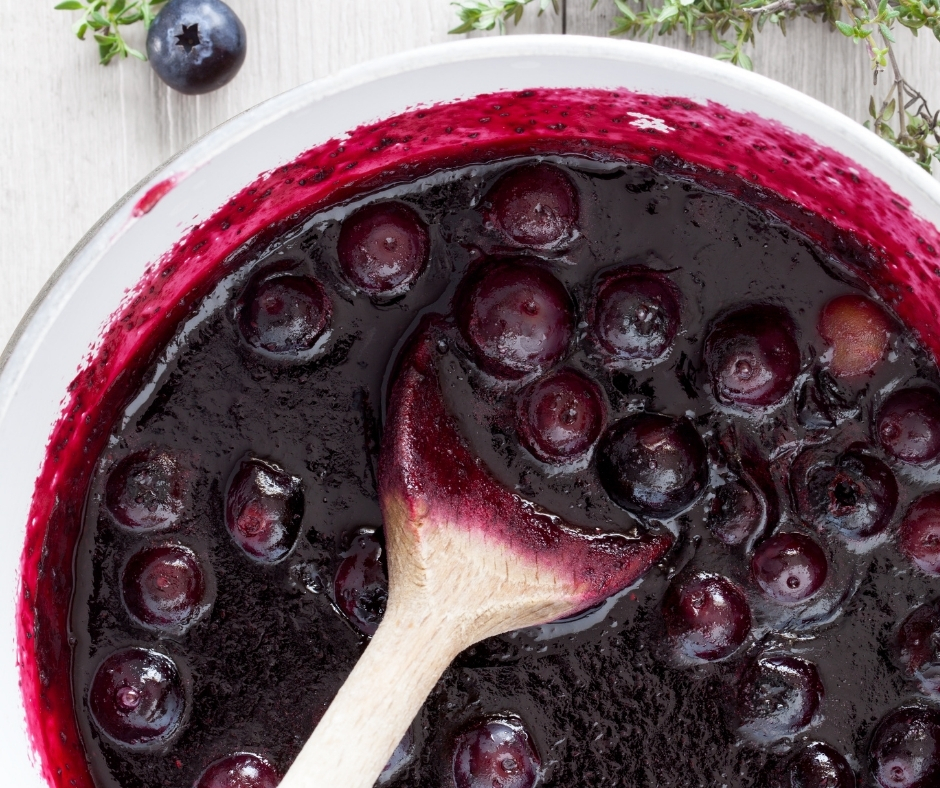
Health Benefits Of Pectin
Because most fruits contain pectin, it is a;lready in your diet. However, the most important question is does it have any health benefits?
Research regarding the anti-cancer activity of pectic polysaccharides is increasing. The theory behind the proposed anti-cancer activity suggests that modified polysaccharides have structural components that can bind to and inhibit mammalian lectin galectin-3 (GAL3). Mammalian lectin galectin 3 is a crucial controller of cellular homeostasis and has a vital role in several stages of cancer metastasis.
In addition to this, one study evaluated the impact of pectic polysaccharides from ginger, swallow root, citrus pectin, and Larchwood arabinogalactan. The pectic polysaccharides inhibited breast cancer cells while swallow root pectin polysaccharides and citrus pectin showed high GAL3 inhibitory abilities.
Both animal and human clinical studies provide evidence that shows pectin to have an in vitro effect on reducing tumor growth and angiogenesis.
Recent research also suggests modified citrus pectin may have a therapeutic effect on heavy metal exposure by acting as a chelator of heavy metals. In other words, pectin acts as a heavy metal detox by binding to heavy metals and removing them from the body.
In Summation
Pectin is a vital ingredient in jams, jellies, marmalades, and preserves, yet so many people do not know about it. With the potential to have an effect on cancer, there is more to this relatively flavorless gelling agent than meets the eye.

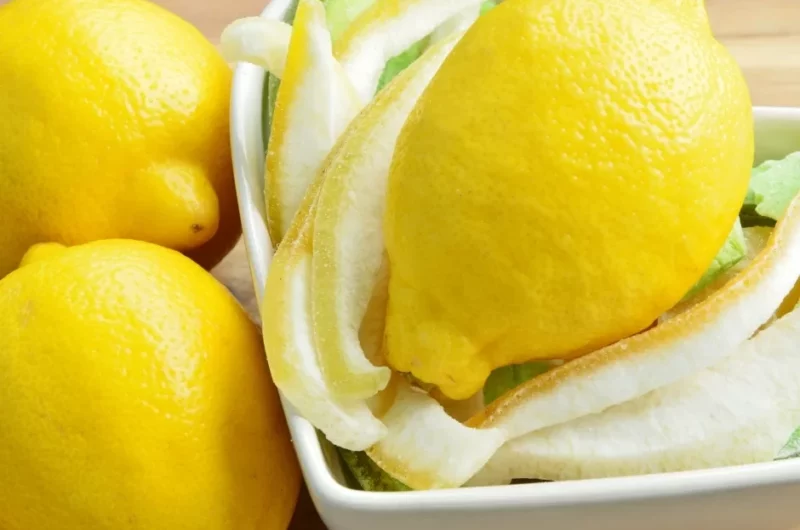
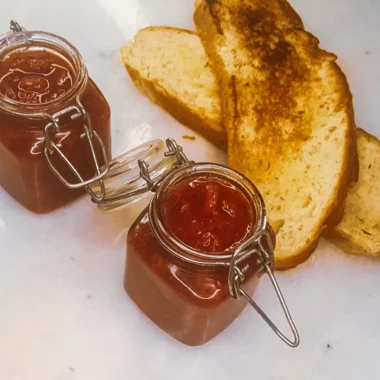
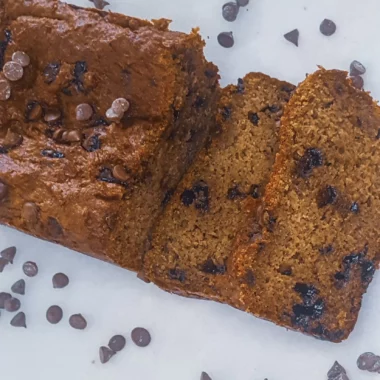



great points altogether, you simply received a new reader. What could you recommend about your post that you simply made some days ago? Any positive?
Hi hairstyles, I am not sure I understand your question? Which post you are referring to? Was something unclear in the blog post?